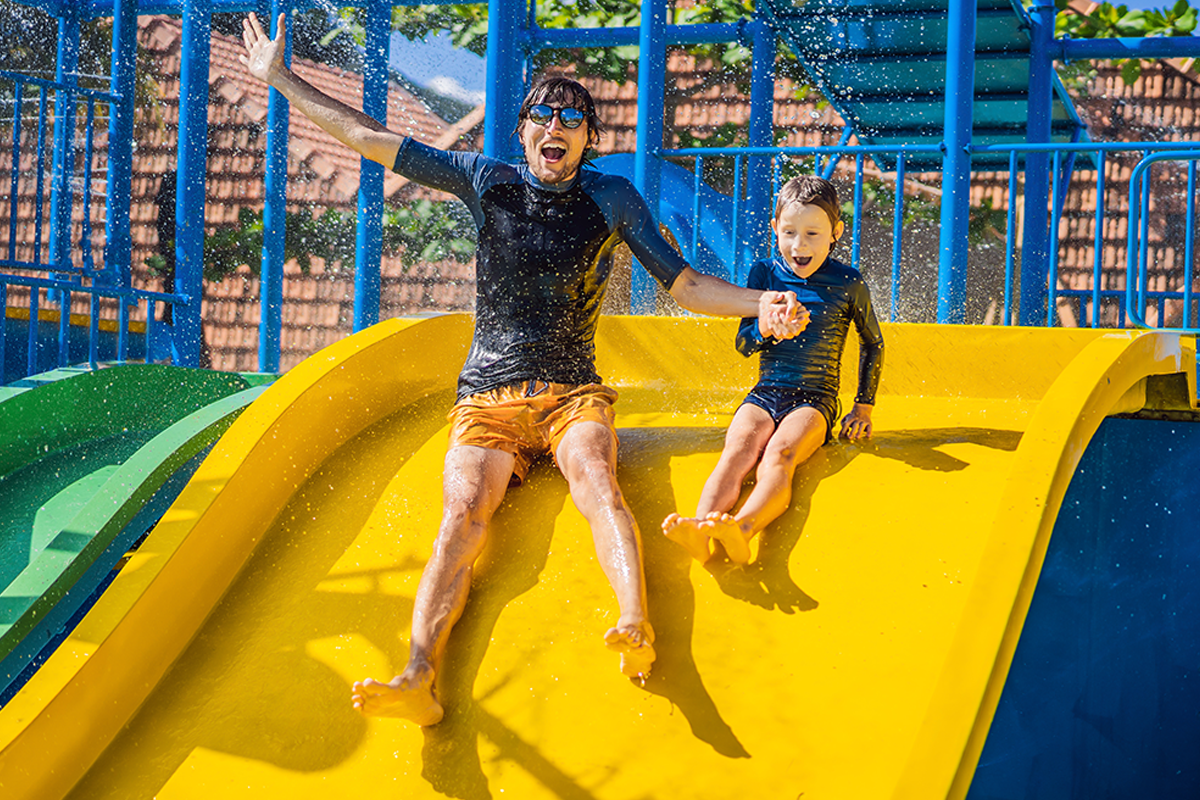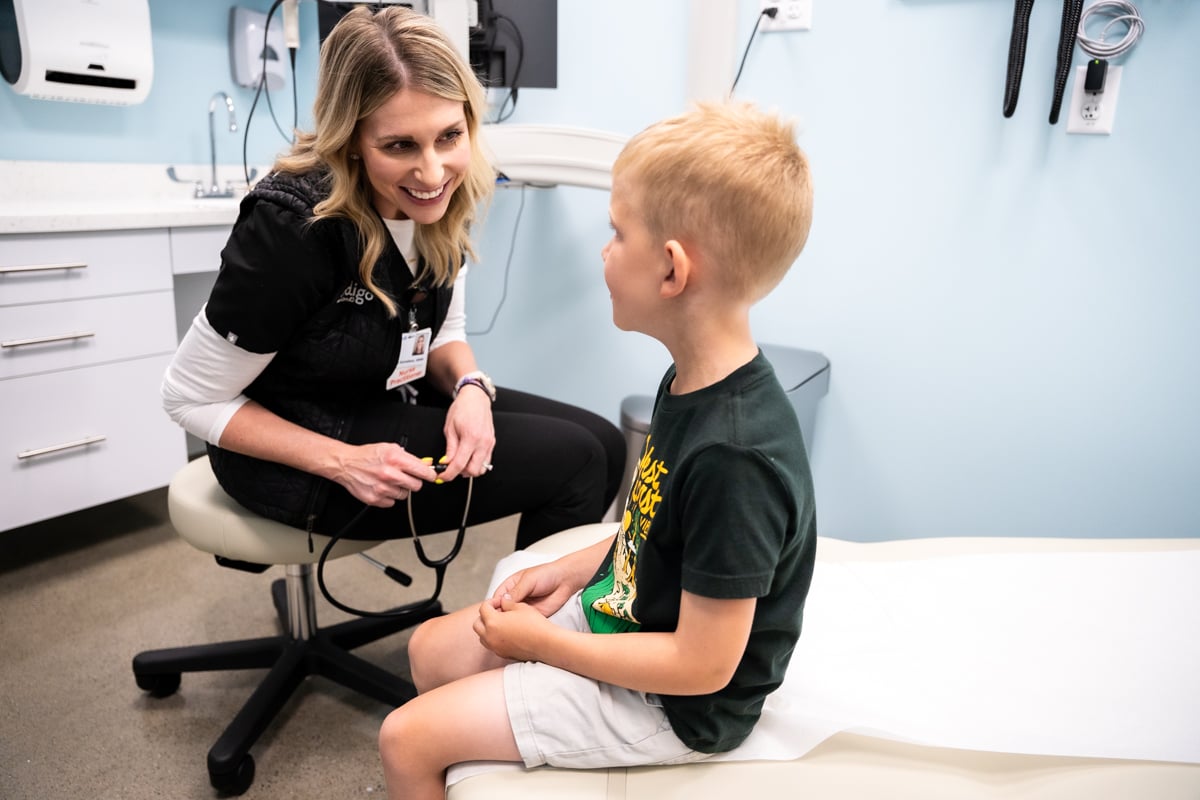When the summer heat is on, there’s nothing like a cool dip in the water. Whether you’re splashing in the backyard, heading to a community pool, or visiting a thrill-filled water park, swimming is a great way for the whole family to stay active and beat the heat.
But while water play is all about fun, it also comes with some serious risks – especially for kids.
According to the Centers for Disease Control and Prevention (CDC), drowning is the leading cause of death for children ages 1-4, and the second leading cause of unintentional injury death for children 5-14. On average, more than 4,000 people drown in the U.S. every year – a heartbreaking statistic that’s often preventable.
Before you grab the beach towels and sunscreen, check out these 10 simple tips to keep everyone safe in and around the water this summer.
1. Keep a close eye on kiddos.
Drowning can happen quietly and quickly – often in less than 30 seconds. Always keep children within arm’s reach when they’re in or near the water.
Quick tip: Designate a Water Watcher whose only job is to supervise swimmers. That means no phones, books, or other distractions. Rotate the role every 30 minutes.
2. Secure your home pool.
Backyard pools are one of the biggest risks for toddlers. Most accidental drownings happen when kids slip away unnoticed. To prevent tragedy, install a four-sided fence with a self-latching, self-closing gate. Always keep the pool covered and locked when not in use.
Quick tip: Add an extra layer of protection by installing door and gate alarms to alert you if someone accesses the pool area.
3. Choose the right flotation gear.
When in or around water, children or inexperienced swimmers should always wear a life jacket that fits snugly but comfortably. Water wings, inflatable toys, or pool noodles are not safety devices and should never replace proper gear or supervision.
Quick tip: Check the label on any life jacket to make sure it’s U.S. Coast Guard-approved.
4. Stick with a buddy.
Even the strongest swimmers can get into trouble. Having someone nearby can make all the difference in an emergency. Make sure buddies are close in age, swimming ability, and comfort level in the water.
Quick tip: Before anyone gets in the pool, set a “buddy check” timer for every 10-15 minutes. Use a whistle, bell, or other clear signal to cue the check. During each buddy check, swimmers should:
- Confirm that they see their partner
- Signal that they’re okay
- Alert an adult immediately if a buddy is missing or needs help
5. Feet first, always.
Diving headfirst into unknown or shallow water can cause serious injuries, including spinal damage. Teach kids (and remind adults) to always enter feet first, especially when using slides or jumping into unfamiliar lakes or pools.
Quick tip: Post “No Diving” signs near shallow areas or home pools to help reinforce the rule.
6. Teach kids how to swim and float.
Water skills dramatically reduce the risk of drowning. Early swim lessons can also help build confidence and teach kids to stay calm if they fall in.
Quick tip: Enroll children in certified swim programs that include floating, basic strokes, and water safety awareness. The American Red Cross and YMCA offer excellent swim and safety resources, including free online courses.
7. Watch out for hazards.
There are a lot of hidden dangers lurking in pools and water parks, like slippery edges, steep drop-offs, and powerful drain suction. Teach kids to stay away from pool drains, and ensure all drain covers are secure and compliant with safety standards. The Zac Foundation – an organization dedicated to improving water safety – offers a wealth of information about the dangers associated with pool or spa drains.
Quick tip: Do a pre-swim safety check for loose tiles, missing drain covers or any sharp or slippery edges that could pose a risk.
8. Swim where it’s safe.
Always swim in designated areas supervised by lifeguards or clearly marked safe for swimming. Avoid swimming in rough, murky, or unsupervised waters.
Quick tip: Teach kids to look for flags, signs, or posted rules before entering the water – and take a moment to explain what each one means.
9. Know what to do in an emergency.
Being prepared saves lives. Learn basic CPR and rescue techniques, keep a charged phone nearby, and know how to find lifesaving equipment like life rings or reaching poles.
Quick tip: Save emergency numbers in your phone, including:
- Local emergency services (911)
- Local non-emergency police/fire lines (especially in remote areas or water parks)
- Nearby lifeguard or park security, if applicable
- Emergency contacts for family or caregivers
Print a copy of these numbers (along with CPR instructions) to post poolside or keep in your swim bag in case your phone isn’t accessible.
10. Keep pool toys tidy and out of the way.
Pool toys are a blast, but they can also lure children to the water unsupervised and pose tripping hazards.
Quick tip: Store all pool toys in a designated, lockable bin or storage area away from the water’s edge when not in use.
When water mishaps happen, Indigo is on it
From slips, strains and sprains, to minor cuts, stings or water-related ear infections, Indigo Urgent Care offers fast, friendly, and convenient care when you need it most.
Quick tip: Save your nearest Indigo location and phone number in your contacts before heading out for a swim day. All Indigo locations offer:
- Same-day and next-day appointments
- Online check-in
- Virtual Care appointments
- On-site x-rays
- Extended hours – in-person and virtually, we’re here 8 am to 8 pm, every day


